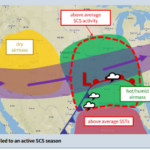“Legitimizing the Shared Economy.”
The phrase, with a trademark symbol at the end of it, is the first thing visitors see on the “About Us” page of InsurTech Buckle’s website.
Executive Summary
With goals of moving gig economy workers up from subprime credit status into the middle market, Marty Young, co-founder of Buckle, joined forces with nonstandard auto insurance agent Dustin Walsey to create an InsurTech modeled on the credit, insurance and advocacy platform that USAA built for members of the military. Drawing from his own background in the military, in automotive retail and in the turnaround restructuring world, Young also envisions a place for a different kind of InsurTech—one that deconstructs the pieces of an insurance carrier into claims handler, paper provider and risk taker and prepares for a future when reinsurers and tech oligopolies offer insurance and everything else.On another website page, co-founder Marty Young summarizes the Buckle philosophy: “We believe in fairness,” he writes. “Forgiveness of debt is a moral high ground agreed upon by most faiths, creeds and cultures. Therefore, there should not be such a focus on the notion of charging someone more for poor credit.”
Like other InsurTechs recently featured in Carrier Management, Buckle is intent on taking credit score out of the formula for auto insurance pricing and building a business model around the notion of fairness. In fact, Buckle’s founders ultimately aim to create a full financial services platform that also actually extends credit to a group that’s predominately subprime: the soldiers of the gig economy, including Uber and Lyft drivers and DoorDash delivery workers.
“Providers of gig services are marginalized by the stigma of bad credit, which often intersects with race,” Young, a former U.S. Army officer and later National Guard chaplain with advanced degrees in business, operations research and theology, told Carrier Management. “Buckle seeks to legitimize them so they can climb the socioeconomic ladder.”
Young said that his work and life experiences to this point helped make Buckle a reality. “I don’t think it would have been possible to create Buckle without these experiences,” he said, going on to list his early post-military work in the fields of automotive retail and collision repair, past executive and advisory roles in restructuring companies across 75-plus transactions valued at more than $30 billion, and his 25-year relationship with Co-Founder Dustin Walsey, the owner of Atlanta-based insurance agencies with deep expertise in nonstandard auto insurance.
Importantly, Young also lists his membership in USAA among formative experiences. Between descriptions about how his relationships with the likes of JP Morgan’s Chase CEO Jamie Dimon informed his ideas about risk-taking and the structure of Buckle, and how experiences in restructuring rental car companies and government contractors prepared him for the regulated world of insurance with a view toward rideshare coverage, Young provided a short history of USAA and its role in moving members of the military up into the middle class.
He observed that the U.S. Army, much like the gig economy today, once skewed poor and minority in the makeup of its ranks. Although Young himself was a middle-class recruit, when he was 19 years old he became a USAA member and got a “ridiculously low interest rate car loan” with no credit history. “Today, I have 16 products from USAA,” he said.
“When USAA made the decision to add enlisted soldiers and their families to their membership rolls,” between 1996 and 2009, “they wiped out the pawn shops, B-lot [non-franchise car] dealers, nonstandard auto agents and other businesses preying on military members and their families outside the gates of the major military institutions. You could walk outside of Fort Benning, and just beyond the gates were strip clubs, liquor stores, title loan shops, pawn shops. It was just awful. But when USAA made the decision to basically add the enlisted, all those businesses were gone in a few short years,” he said.
Young sees USAA as a vital part of the military-industrial infrastructure. “I think it’s become more important than Boeing or Lockheed,” he said, noting that in addition to providing insurance and credit, the Texas-based financial services giant “is also engaged with every material nonprofit supporting U.S. military members, veterans and their families. And they’ve been involved in lobbying for the National Defense Authorization Act for years. In fact, I credit USAA, more than any other institution in the last 30 years, for ensuring the military got a pay raise every year, especially years when non-uniform government employees got none.”
“Annual pay increases, government benefits and other forms of support provide tremendous certainty for the repayment of loans and covering annual increases in insurance payments,” said Young.
“When we looked at insuring gig workers, we knew we would fail unless we had a mindset of going all-in creating the USAA of the gig economy,” he explained. “We knew we would have to solve the whole problem”—insurance and credit and advocacy—”not just part of the problem,” said Young, who went on to talk about Buckle’s first rideshare insurance product launched in 2020, its preparations to move into auto leasing and the work of its advocacy platform. The advocacy platform, Buckle CARES, helps members access government money, including COVID-19 Economic Injury Disaster Loans and food stamps. “In 2020, we helped get our members more money from the government than they paid us in premiums earned,” Young noted, putting the average amount of government relief at $3,200 per member.
Roughly 95 percent of Buckle’s members have credit scores of 670 or less, reflective of the state of the gig economy. Only 5 percent of the gig economy is considered prime, and only 1 percent are 700 or better.
To Young, fairness means removing or lowering “the effects of the credit score tax on the working nonprime,” who pay 50-100 percent more for their car insurance and up to 1,000 percent more in interest and fees for their auto loans and leases. “That’s what we’re focused on doing. And by doing it the way we’re doing it, we increase the effective take-home pay of our members 5-25 percent, which basically moves them from the lower middle class or upper lower class into the middle class,” he said.
Building Blocks
Currently numbering around 60 employees, Young said that half of Buckle’s workforce is made up of USAA members. “That’s important because they immediately understand what we’re trying to do,” he said. The best way to understand USAA is not from the perspective of the insurance and banking industry, he believes. “You have to come at it through the lens of the U.S. military and government contracting,” he said, also revealing that most of Buckle’s executive team consists of seasoned former USAA executives.
Going on to describe the rest of the workforce, he also said 10 percent of the company is made up of former junior military officers—also USAA members. “They are can-do people with incredibly strong work ethics, [who pay] tremendous attention to detail. They’re really the creme de la creme of the officer corps coming out of the junior and senior military officer ranks.”
Technologists make up another 15 percent of the company with a focus on collecting and curating data assets, Young said, later revealing that Buckle tracks thousands of data points on individual members. “Our technology knows who you’re driving for, when you’re driving, what routes you’re driving, how much you make, what your tips are, what your star rating is by Transportation Network Company,” he said, giving a hint about the secret sauce that Buckle uses to price its signature product—a hybrid auto insurance policy providing drivers with a combination of personal and commercial coverage to protect them regardless of whether the driving app is turned on or off.
Complementing those groups are people with “deep wheels experience across Progressive’s entire value chain,” another 15 percent of Buckle’s workforce. That includes Walsey—”one of the top 100 Progressive agents in the country”—and others who came from the product and claims side. Another 15 percent of the team has similar experience in the commercial lines—in particular, taxi, limo and transportation network company insurance experience.
Young brings his experience in the turnaround and restructuring world to the role of heading up a special situations team, which is tasked with “executing fundless sponsor mergers and acquisitions in deeply distressed assets across both state and federal insolvency regimes,” he said. Buckle’s June 2020 acquisition of Gateway Insurance Company, followed by the acquisitions of American Country Insurance Company and American Service Insurance Company—Atlas Financial subsidiaries that were in liquidation—are examples, with more deals on the horizon, Young says. (Editor’s Note: Fundless sponsors seek acquisition candidates without having the capital to complete the deals up front. Instead, they arrange equity or debt financing—debt in Buckle’s case—after signing letters of intent. Buckle signed an LOI for Gateway in January 2020 and in June announced financing to recapitalize Gateway from Hudson Structured Capital Management Ltd.) The reason Buckle uses a “fundless sponsor” structure is to create bespoke yet optimal acquisition and capitalization solutions, according to Young.
What else might Buckle acquire? More “insurance company shells, personnel and what I call digital infrastructure,” Young said. “We acquired a Guidewire, our claims system through an M&A structure. I have a state-of-the-art system that would have taken three years to build, but I acquired,” he said.
Roughly 15 percent of Buckle’s workforce joined the company as a result of acquisitions, Young said. Other special teams at Buckle include one focused on building out an auto leasing team, another that scopes out opportunities to team up with MGAs on specialty programs beyond Buckle’s current offerings and a regulatory affairs compliance team. “We love compliance, and we see it as a strategic advantage. We’re constantly meeting with regulators, and our envoy team [consists of] lawyers and cleared personnel,” he said.
For Buckle, 2020 was a building year as the acquisitions came to fruition and key executives, like Chief Financial Officer and Chief Operating Officer Kristi Matus, a former CFO and president of Life Insurance Services at USAA, came on board. But COVID trends in the rideshare and taxi industries did prompt a reduction in force—mainly impacting the frontline call center. “We did do that reduction and it was very significant. We were 100 percent rideshare [insurance] at the time with Uber and Lyft, and we saw rideshare activity plummet by 80 percent. And we were acquiring Atlas’s insurance company, Gateway, which saw their taxi and limo book plummet 90 percent.
“So, we made the decision that we weren’t going to focus on growth in terms of top line. We were going to focus on building out infrastructure, making investments in systems and management, acquiring additional assets”—looking ahead to a post-COVID period when the company could again scale with minimal levels of organizational debt. “We would have our own carriers, our own paper, our own claims team” while shedding a digital MGA, which was the initial business model.
There were no other pivots to Buckle’s game plan, Young said. “Before COVID, we knew that insurance MGAs would have to become carriers,” he said. “I think we got there faster than any other InsurTech because we knew that you had to control the value chain.”
Carriers That Don’t Take Risk
With three carriers, three managing general agencies and even a Vermont cell captive and a licensed third-party administrator sitting under its umbrella, Buckle has licenses to control all the pieces of the value chain. Still, Young isn’t sold on the idea that Buckle needs to participate in one activity that most other carriers do—taking risk onto its balance sheet. That’s a role he sees more properly taken on by reinsurers and the capital markets.
Speaking at the 11th Annual Insurance M&A Symposium presented by S&P Global and Deloitte late last year, the former investment banker and veteran of capital restructurings in industries as diverse as aviation, consumer products, defense, government contracting, media, retail, technology, telecommunications and textiles predicted that the insurance industry is at the beginning of a restructuring cycle. He warned carriers to rethink their risk-taking activities. “If you’re an insurer today, and you’re really good at underwriting, you should evolve into being a reinsurer and jettison out other assets,” he said at the M&A conference. “If you’re going to try to be a standalone insurer, you’ve got to think about what are you really good at: What can you go and charge [for] in the market and make money on a standalone basis? If you can’t, you should probably get rid of it.”
“It’s a very restructuring mindset, but that’s where we see this whole world going. As the value chain breaks apart, the real economics move out into capital markets, the reinsurer markets and the people with proprietary distribution. That’s just going to squeeze everything in the middle out,” said Young, who drew an analogy to what he watched happen to the credit industry after the 2008 financial crisis—investment banks that were once risk-taking businesses turning themselves into fee-making ones instead.
“What you saw is that institutional investors really started to be the ones to drive and price risk, and the banks became conduits” following the crisis, he said while presenting a slide with a side-by-side comparison of the credit markets and the insurance industry. Starting with issuers in the credit markets, he said issuers hire investment bankers, who find banks to originate paper; banks, in turn, enter agency agreements with loan servicers managing administrative processes. “All the risk is moved into the institutional markets,” such as securitization and CLO markets.
“When we thought about Buckle, we thought it had to work in the same way…We would think of MGAs and corporates much like issuers. We would partner with reinsurance brokers to basically run processes—to understand and help MGAs size and price distribution. We would run carriers as effectively fronts,” providing the paper that drivers and fleets need to comply with financial responsibility laws. “We would have our own captive TPA,” as well, he said, showing another slide depicting these individual Buckle pieces of the insurance chain under headings like “compliance-as-a-service,” and “claims-as-a-service” available to “plug and play” depending on customer needs.
In Young’s analysis, reinsurers are the risk takers in the value chain—not the insurers. “Reinsurers should really be the ones taking all the risk because they’re the ones best situated to price risk, and they’re the ones with the best balance sheets to basically take it on,” he said, also describing how Buckle technology stitches the various pieces of the value chain together.
“Buckle’s insurance business follows the modern credit paradigm,” Young told Carrier Management. “We provide licenses, capital, claims and technology—everything in between reinsurers and MGAs,” he said.
“The amount of information that the reinsurers have compared to any given insurer is so completely asymmetric because they see your deal, and they see everybody else that’s doing what you’re doing. They see everything. So, embrace it,” Young told M&A conference attendees. “If they’ve got that kind of information advantage, let the reinsurance industry be the ones to basically assess and price risk. That was the insight from the credit industry. Post-2008, everybody got the message,” he said.
Given Young’s view that reinsurers are in the best position to price risk, where do the data assets and technology that Buckle uses to offer insurance, such as its signature hybrid rideshare policies, fit in?
Young explains that the formula for price is loss cost times loss cost multiplier. “We rely heavily on discussions with reinsurers to arrive at an agreed upon loss cost; the rest is formulaic,” he said. “They have more data about loss costs than any specific insurance company in any risk class because they see the loss costs across the entire insurance industry. And so, we’ve actually priced the program based on reinsurance data because we didn’t have the loss cost data, but they did.” In that sense, reinsurers effectively set the price, he said.
Answering a related question about why Buckle purchased insurance carriers and is planning to acquire more, he said, “We realized that the real opportunity in reducing the cost of an insurance product is reducing the loss cost multiplier. And the key to managing and reducing the variable expenses of the LCM is owning a carrier,” he said. Multiple carriers allow Buckle to properly segment risk classes and their corresponding loss costs, he said.
Buckle also built a Vermont cell captive, allowing TNCs and taxi and limo fleets to keep risk themselves “rather than paying markup” from insurers seeking underwriting profit. Some of them see “zero value” in risk transfer because their balance sheets can absorb losses, he said. Back at the M&A conference, he said they are basically doing the same type of analysis that rental car companies did 20 years ago: “When they made the decision on who’s going to rent that car—the underwriting decision—they also made the decision on how utilized that fleet was going to be. And what they quickly realized is they could easily pay [for] insurance losses as long as that fleet utilization was up” by a certain percentage. “The economics of fleet utilization way overwhelmed the economics of losses,” he said, explaining why rental car companies he worked with stopped doing risk transfer, predicting that TNCs will follow suit.
(Young shared more ideas about the restructuring of the insurance industry with CM and at the M&A conference, ultimately predicting that tech oligopolies like Google and Amazon will be conduits sending risk off into the reinsurance and capital markets. Read more in the related online article, “Reinsurers and Tech Oligopolies: The Future of Insurance”)
Topics USA Carriers Auto Profit Loss Agencies InsurTech Claims Tech Reinsurance Insurance Wholesale Market Human Resources




















 The Smart Workforce Pivot: Insurance’s Backdoor to Talent Acquisition
The Smart Workforce Pivot: Insurance’s Backdoor to Talent Acquisition  KCC: Frequent SCS Activity Emphasizes Need for Latest Modeling Tech
KCC: Frequent SCS Activity Emphasizes Need for Latest Modeling Tech  Middle Manager Is the Middle Child
Middle Manager Is the Middle Child  Study Urges Rethinking of Disaster Management in Era of Compounding Events
Study Urges Rethinking of Disaster Management in Era of Compounding Events 
















